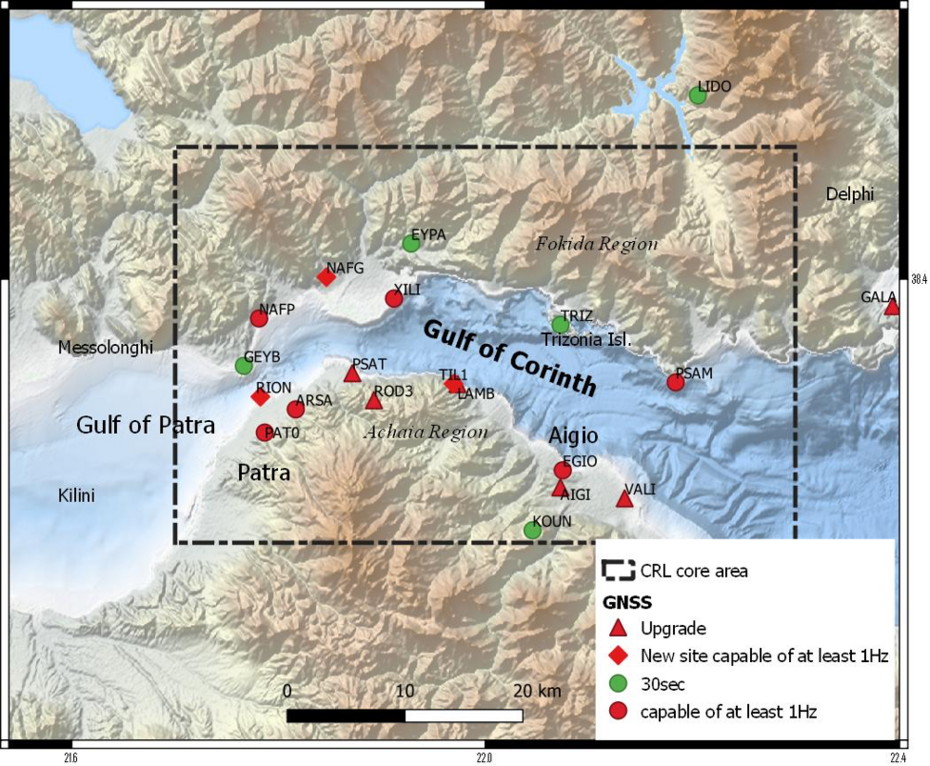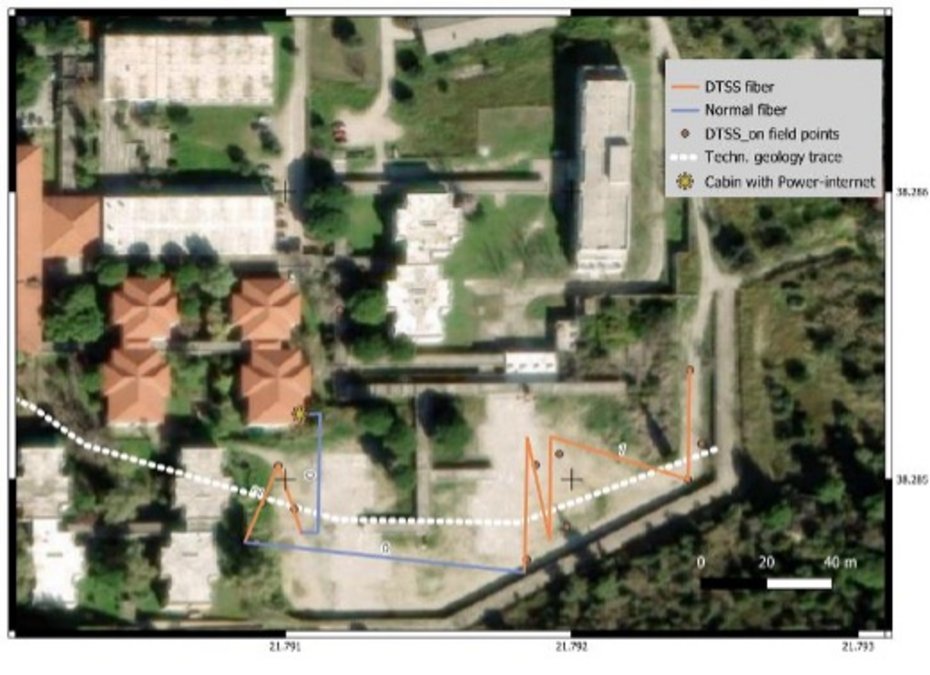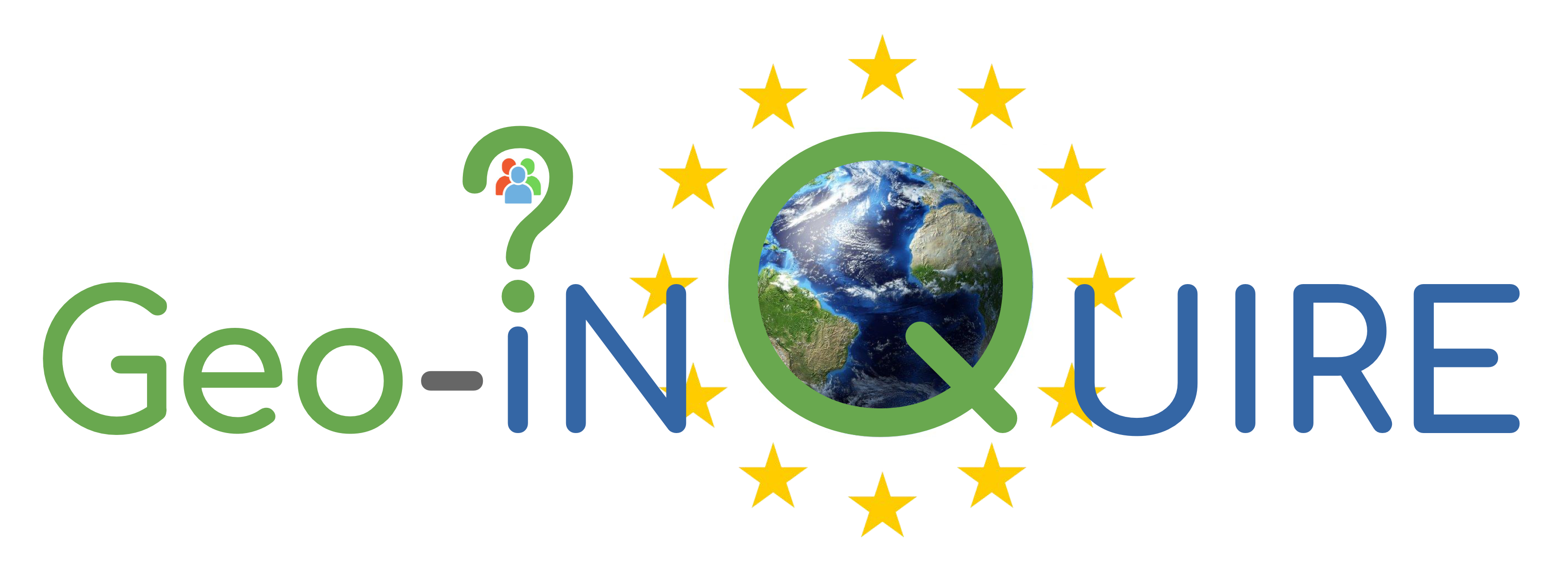

Corinth Rift Laboratory - Distributed Temperature and Strain Sensor (DTSS) on fibers - GNSS network
Host Institution:
National Observatory of Athens (NOA), Greece and
Centre national de la recherche scientifique (CNRS), France
Description:
Corinth Rift Laboratory is an EPOS Near Fault Observatory (NFO), developed under a French-Greek collaboration. It monitors the fastest opening rift in the Euro-Mediterranean region with several M>6 earthquakes per century. With more than 60 instruments (seismometers, GNSS, strainmeters, tide gauges, meteorological), it is possible to track and interpret the dynamics of the seismicity and the deformation related to fluid pressurization and circulation at depth. Thanks to frequent earthquake swarms, lasting days to months, it has been discovered that some faults exhibit dual behaviour, with transient creep and pore pressure diffusion. Most data and products from CRL are distributed through EPOS. In addition, new instrumentation is planned at CRL, with additional monitoring by fiber optic systems (DAS, BOTDR, innovative strainmeters and electrometers) and high frequency GNSS.
Services offered:
The experiments will provide infrastructure for hosting experimental DTSS (Distributed Temperature and Strain Sensing) interrogators, the main scientific target been to monitor the surface creeping process of the Rio-Patras oblique fault. Moreover they will provide infrastructure for hosting experimental of GNSS instruments (e.g., low cost, high frequency, multi-constellation) collocated with the existing CRL network of geodetic-grade GNSS receivers, part of them being high-rate, with the objective to extend the applications of GNNS, consider lower cost measuring solutions, and simultaneously decrease the detection level. The TA measurements can be jointly used and validated by the existing CRL network.
Rio-Patras fault is a transfer fault zone between the Corinth rift and the normal faults inferred offshore in the southern gulf of Patras. Its eastern extremity starting from almost normal, becoming purely strike slip further south. It runs through the University of Patras campus (being oblique) in Rio, Greece, with clear surface ruptures (Elias & Briole 2018). In the framework of TRANSFORM² project (begun on December 1st, 2024) DTSS ready fibers are about to be installed focusing on several sites across this rupture. Investigating the InSAR map, with visible differential displacement rates across the two blocks, in the east the transition (between the two blocks) is abrupt and the rupture lineament is very obvious. In the west part the transition zone is wide. Considering the InSAR map, the main rupture trace from technical geology (brown line) and the locations of microcracks (red starts) seven fiber optics patches, with a total length of 820m will be buried tight in the ground. When possible, the DTSS fiber of each profile will be connected to its neighbor fiber with a simple optic cable in order to allow for the interrogation of several profiles simultaneously. This will be particularly valuable for experiments proposing continuous monitoring, as it would provide critical information of the respective timing of transient creep., if any is detected. The interrogation can be performed either continuously for some months or repeatedly through longer period of time. It is advisable to have good communication with the hosting institutes during the proposal.
The TA measurements can be jointly used and validated by the existing CRL network. The experiments can have objectives in the field of geodesy, seismology as well as atmospheric (both tropospheric and ionospheric) and meteorological studies. Those experiments will provide a unique opportunity to investigate seismic/aseismic coupling, seismicity, and the associated role of fluids.
Those experiments will provide a unique opportunity to investigate seismic/aseismic coupling, and GNSS seismology. The full or down-sampled data collected during the experiments will be integrated into the seismological and geodetic VAs in WP2.
Modality of access:
The unit of the physical access to TA services is “1 week”, with typical physical access durations between 3 and 5 weeks, for one or two applicants. TA will be offered for in-person access to install instruments and to collect data. Some of the relevant (low and HF GNSS stations) can also be provided by the facility.
Support:
The support offered is accessibility to the infrastructure, housing of the interrogator, accessibility to various GNSS station locations, field installation and de-installation, remote control through the internet, and real-time telemetry of the records.
Additional information:
